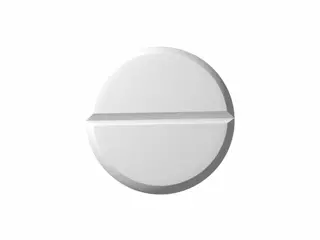| Package | Dosage | Price | Price per Dose | |
|---|---|---|---|---|
| Dosage: 25mg | ||||
| 360 pill | 25mg | NZD537.54 | NZD1.49 | |
| 180 pill | 25mg | NZD286.84 | NZD1.59 | |
| 120 pill | 25mg | NZD207.29 | NZD1.74 | |
| 90 pill | 25mg | NZD185.59 | NZD2.07 | |
| 60 pill | 25mg | NZD149.43 | NZD2.48 | |
| 30 pill | 25mg | NZD91.58 | NZD3.06 | |
| 10 pill | 25mg | NZD38.55 | NZD3.86 | |
| Dosage: 50mg | ||||
| 360 pill | 50mg | NZD841.28 | NZD2.34 | |
| 180 pill | 50mg | NZD433.89 | NZD2.41 | |
| 120 pill | 50mg | NZD318.18 | NZD2.65 | |
| 90 pill | 50mg | NZD262.73 | NZD2.92 | |
| 60 pill | 50mg | NZD209.70 | NZD3.50 | |
| 30 pill | 50mg | NZD115.69 | NZD3.86 | |
| 10 pill | 50mg | NZD43.37 | NZD4.34 | |
| Dosage: 100mg | ||||
| 180 pill | 100mg | NZD520.67 | NZD2.89 | |
| 120 pill | 100mg | NZD392.91 | NZD3.28 | |
| 90 pill | 100mg | NZD335.05 | NZD3.71 | |
| 60 pill | 100mg | NZD238.63 | NZD3.98 | |
| 30 pill | 100mg | NZD130.15 | NZD4.34 | |
| 10 pill | 100mg | NZD48.19 | NZD4.82 | |

Clomiphene Description
Overview of Clomiphene
Clomiphene is a widely used medication primarily prescribed to treat infertility in women. It is classified as a selective estrogen receptor modulator (SERM), which means it can act differently on estrogen receptors depending on the tissue. This dual action makes it effective in stimulating ovulation. Clomiphene is available in oral tablet form, making it convenient for patients to take at home. The medication has been on the market for decades and has a well-established reputation for helping women conceive when other methods have failed. Its versatility and effectiveness have also led to off-label uses in other hormonal treatments, although such uses should always be under medical supervision.
How Clomiphene Works
The main mechanism of clomiphene involves blocking estrogen receptors in the hypothalamus, a part of the brain that regulates hormone production. When these receptors are blocked, the hypothalamus perceives a low level of estrogen. This triggers the release of gonadotropin-releasing hormone (GnRH), which in turn stimulates the pituitary gland to produce increased amounts of follicle-stimulating hormone (FSH) and luteinizing hormone (LH). Elevated levels of FSH and LH promote ovulation, helping follicles in the ovaries to mature and release eggs. This process increases the chances of conception in women facing issues related to irregular ovulation or anovulation. Selecting the right dosage and timing is crucial to optimize results and minimize side effects.
Advantages and Effectiveness
Many women have successfully achieved pregnancy using clomiphene. Its advantages include oral administration, which is less invasive compared to injections or surgical options. Clomiphene is also relatively affordable and widely accessible. The medication is especially effective for women with polycystic ovary syndrome (PCOS) and other forms of ovulatory dysfunction. Response rates vary, but many women experience successful ovulation and conception after a few treatment cycles. It is often prescribed as the first-line treatment for infertility related to ovulation problems. Close monitoring by a healthcare provider ensures that treatment is tailored to the individual patient’s needs, maximizing the chances of success.
Potential Side Effects and Risks
While clomiphene is generally safe when used as directed, it can cause side effects. Some women experience hot flashes, mood swings, breast tenderness, nausea, or headaches. In rare cases, visual disturbances such as blurred vision or seeing spots can occur. There is also a small risk of multiple pregnancies, including twins or triplets, due to the stimulation of multiple follicles. Prolonged or excessive use of clomiphene may increase the risk of ovarian hyperstimulation syndrome or ovarian cyst formation. It is important for patients to undergo regular medical checks during treatment to monitor response and prevent complications. Patients with certain conditions, such as liver disease or ovarian cysts, should inform their healthcare provider before starting therapy.
Usage and Dosage
The typical starting dose of clomiphene is 50 mg per day for five days, usually beginning on the fifth day of the menstrual cycle. Based on response, the dose can be increased up to a maximum of 100 mg per day in subsequent cycles. Treatment duration usually does not exceed six cycles to reduce risks. Timing is essential; women should have periodic ultrasound scans and hormone level assessments to track follicle development. It is important to follow the healthcare provider’s instructions closely and maintain regular communication to adjust dosage as needed. Proper usage helps improve the likelihood of successful ovulation and pregnancy while reducing side effects.

